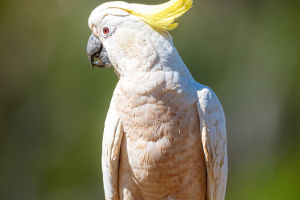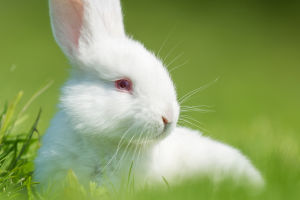Jellyfish Slumber
Sleep is widespread among higher animals. For example, humans spend nearly one-third of our lives sleeping. However, before closing your eyes for rest, have you ever wondered whether those structurally simple animals on Earth need to sleep?
In the past decade, scientists have recently confirmed sleep-like behaviors in "brainy" organisms including zebrafish, fruit flies, and even nematodes. This suggests that sleep exists across a wide range of animals, from flatworms to mammals.
A new question arises: Do "brainless" animals sleep? For example, jellyfish. New research provides an intriguing answer to these questions. The study suggests that jellyfish, as one of the earliest evolved animals, exhibit sleep-like resting states.
Strolling along the seashore, you might observe jellyfish gracefully pulsating up and down in the ocean, moving slowly and rhythmically. Jellyfish belong to one of the earliest branches of the evolutionary tree — the cnidarians, which appeared on Earth nearly a billion years ago. It's generally believed that cnidarians lack complex behaviors, aside from their stereotyped movements controlled by electrical impulses.
However, Nath et al published an article in "Contemporary Biology" proposing an interesting conclusion: jellyfish, from both behavioral and physiological perspectives, also experience sleep. This is remarkable as sleep was previously thought to be a phenomenon found only in higher animals.
Previously, sleep-like states have been reported in several cnidarians. For instance, soft corals exhibit rhythmic swaying of their tentacles. Box jellyfish, for example, would lie motionless on the seabed in the afternoon for several hours, with their bell-shaped bodies showing no signs of movement, and their tentacles lazily hanging on the seafloor.
They are said to be reluctant to wake up when swept into water currents, but once stirred up, they would return to the seabed and lie quietly again. Similar phenomena have been reported in studies of two other species of box jellyfish.
In both field and laboratory settings, Copula sivickisi would tether themselves under rocks or corals during the day for resting; Tripedalia cystophora would rest in the mud of mangrove pools at night. In these examples, the motionless state could be disrupted by drastic changes in light cycles, indicating the involvement of environmental light in regulating this mysterious state.
Nath et al demonstrated the significance of reduced jellyfish activity during sleep-like states through a series of simple experiments. They focused on the "upside-down jellyfish" Cassiopea, named so because they prefer to "rest" on the seabed in shallow waters. These jellyfish typically maintain a steady pulsation rate to provide oxygen for the photosynthetic algae they host. Nath et al. tracked jellyfish activity and quantified their activity over a continuous 24-hour period.
They found that Cassiopea exhibited reduced activity at night compared to during the day, characterized by fewer pulsations, longer and more irregular intervals between pulses, but no interval exceeding 20 seconds.
This diurnal variation in activity patterns was not attributed to feeding during the day and fasting at night, as the phenomenon persisted in fasting animals. However, nighttime feeding significantly increased the number of pulses, indirectly indicating the modulability of the sleep-like state.
They proved that jellyfish exhibit reduced responsiveness to external stimuli during nighttime rest. When jellyfish were stimulated at night, they took longer to respond compared to daytime.
Importantly, Nath et al applied the stimuli again a few seconds after the first stimulus, as jellyfish, if asleep before the first stimulation, would wake up after the first stimulus, resulting in a shorter response time to the second stimulus. This was indeed observed. Additionally, during daytime experiments, jellyfish responded faster, with little difference in response times between the first and second stimuli.
They also discovered that jellyfish's nighttime rest state is self-regulated. When jellyfish activity was unrestricted, their activity decreased significantly from midnight to 1 am. After 12 hours of continuous daytime activity, activity during this 0-1 am period decreased even more.
Similar phenomena of deeper and longer sleep with prolonged activity have been observed in other animals. It's worth noting that, similar to the study on flatworms mentioned earlier, this experiment also employed methods to measure hormone levels to characterize jellyfish alertness, thus ruling out decreased activity due to muscle fatigue as a false result.
Nath et al provide compelling evidence that resting jellyfish are indeed in a state akin to sleep. This discovery makes jellyfish the simplest known animal capable of sleep.


